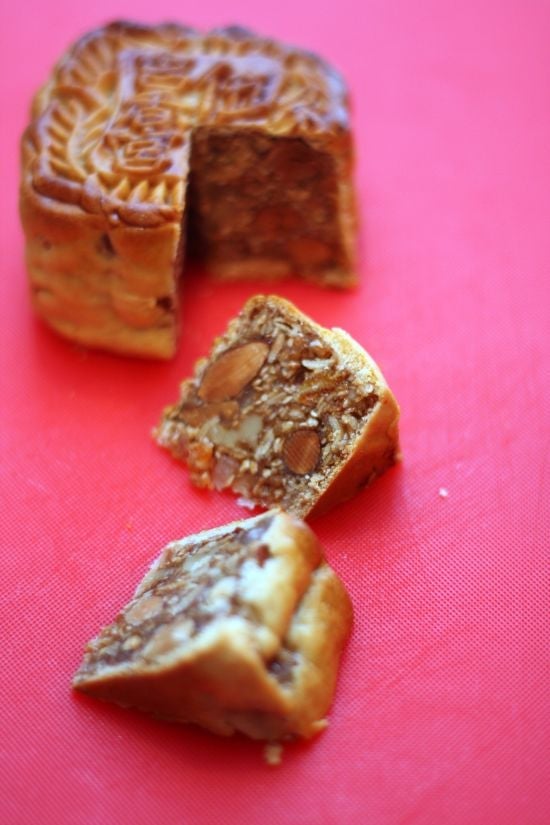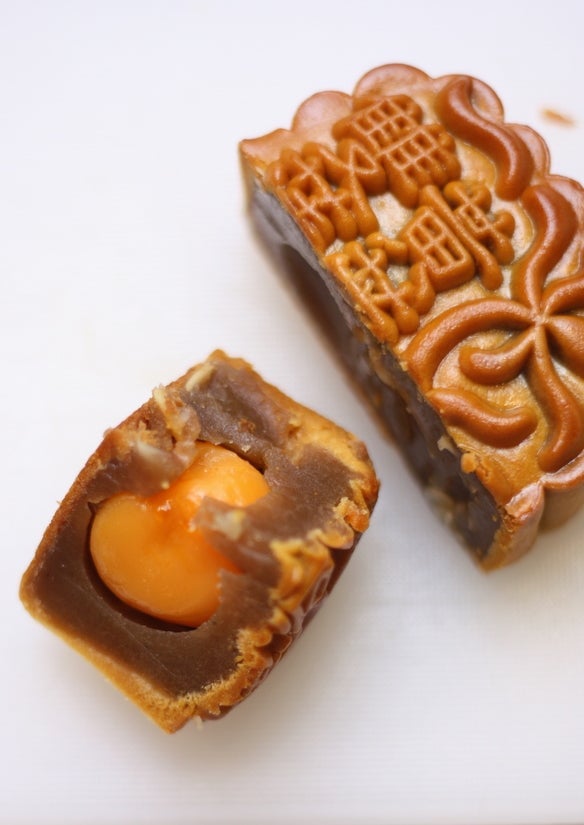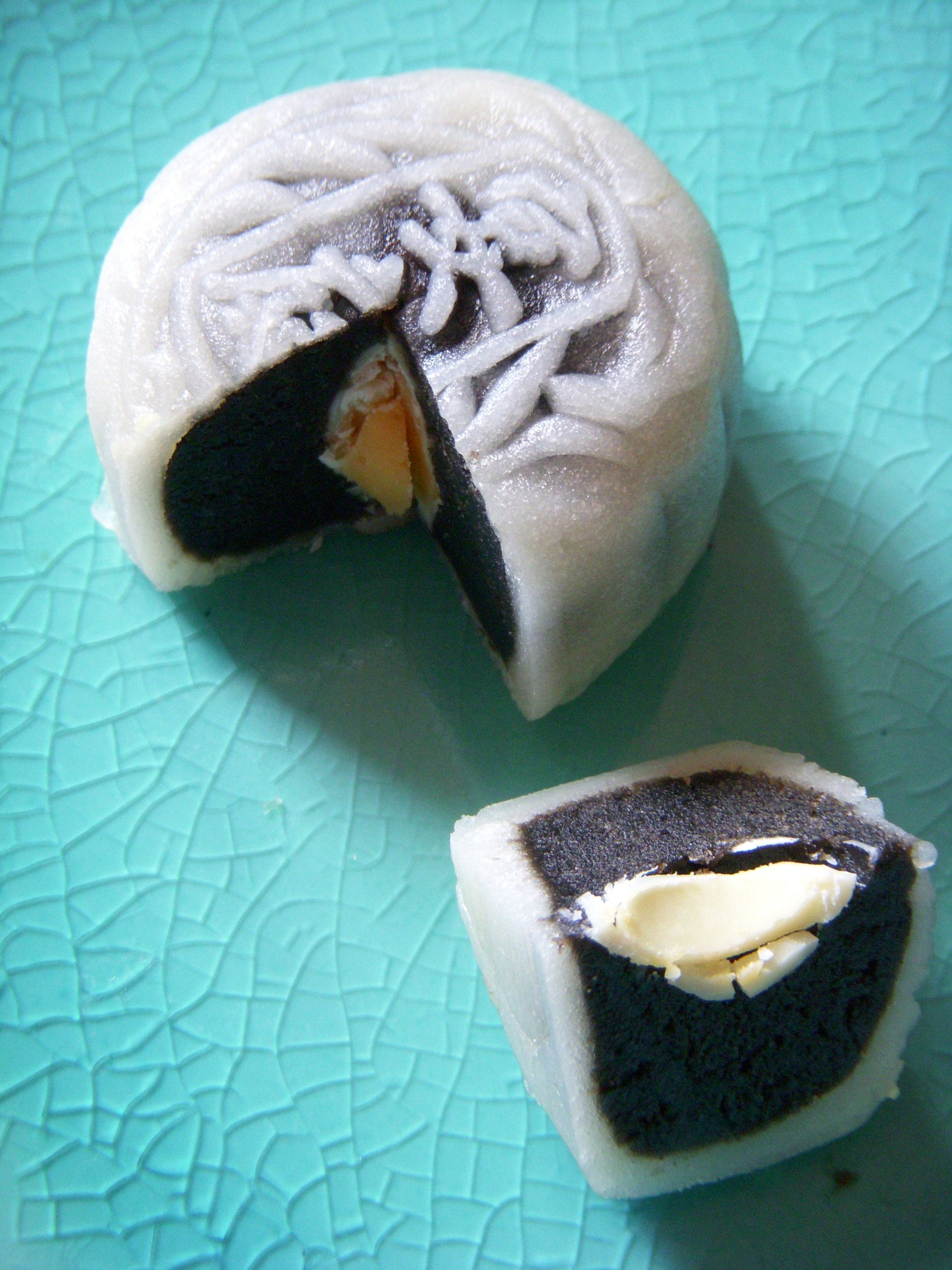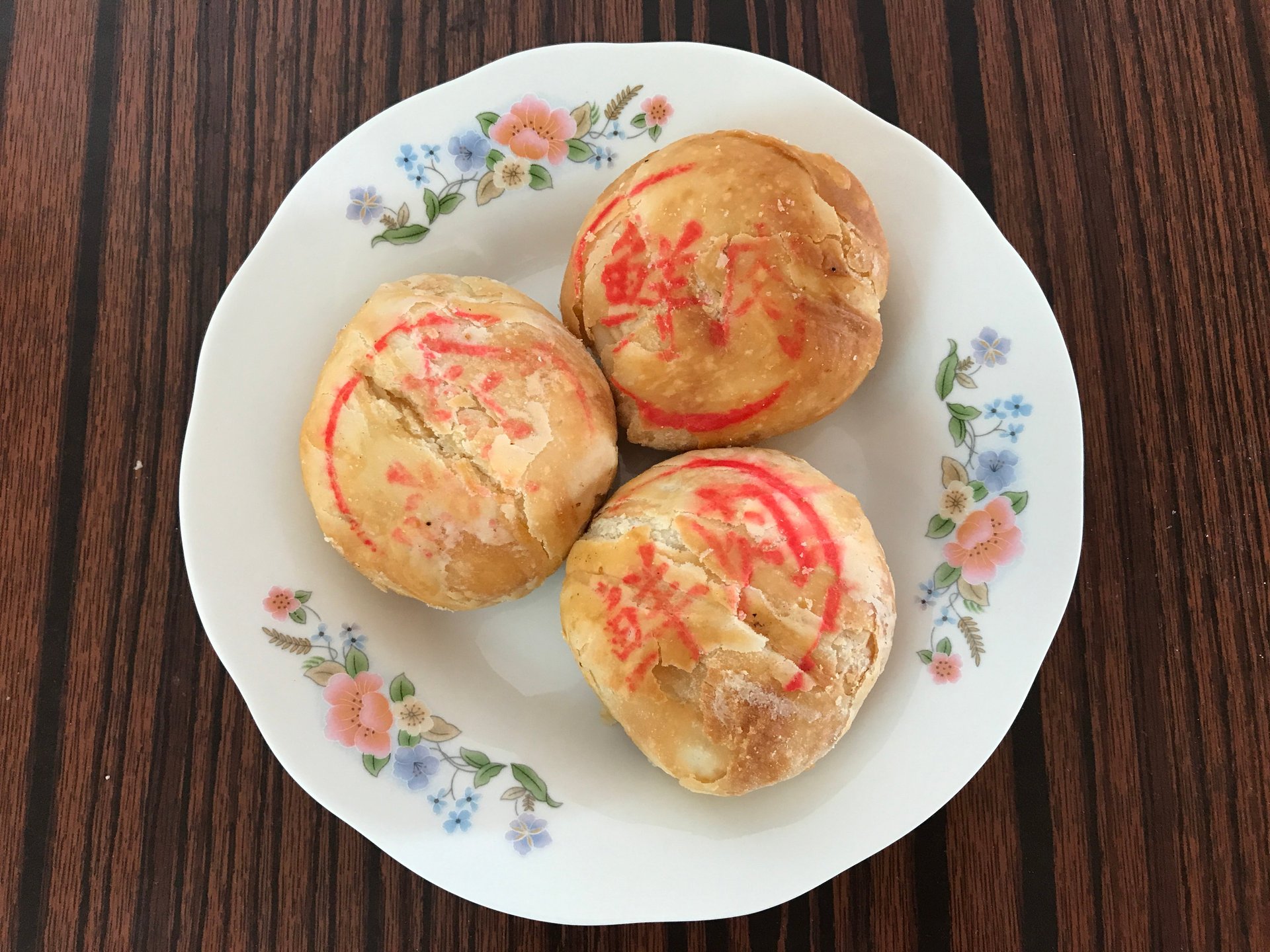Your Mid-Autumn Festival guide to eating mooncakes
You can almost certainly associate one or two special foods with every single traditional festival in China. And so it is with mooncakes for the Mid-Autumn Festival, celebrated each year on the 15th day of the eighth lunar month. It falls on Oct. 4 this year.


You can almost certainly associate one or two special foods with every single traditional festival in China. And so it is with mooncakes for the Mid-Autumn Festival, celebrated each year on the 15th day of the eighth lunar month. It falls on Oct. 4 this year.
Mooncakes, usually made of a rich paste filling surrounded by a thin crust, are traditionally eaten while sipping tea and gazing upon the roundest, brightest moon of the year after a mid-Autumn family dinner. But with a crazily wide variety of new fillings ranging from crayfish to pickles to bullfrogs, it’s become pretty confusing for people to know which kinds of mooncakes to indulge in.
Here are four types of mooncakes you shouldn’t miss, based on my two decades or so of mooncake-eating experience. They are wildly popular in China, and include both traditional versions and more experimental styles. Below, I score them based on their deliciousness, appearance, and festive elements. Five smiley faces are the highest score available for each criteria.
Five-nut mooncakes
Tastiness: 😊😊
Appearance: 😊😊😊
Festive elements: 😊😊😊😊😊

Five-nut, or wu ren, mooncake is one of the oldest and most famous varieties. The five nuts in the filling typically are walnuts, almonds, sesame seeds, sunflower seeds, and Chinese olive nuts, wrapped in a crust of glutinous rice flour and sugar.
Chinese people pay particular heed to auspicious homophones during festivals. Because “nut” shares the same Chinese character 仁 with “benevolence,” wu ren mooncakes are also interpreted to represent the five Chinese traditional virtues, including loyalty and filial piety.
Wu ren mooncake tastes sweet and salty at the same time, but can be a bit hard for some to chew. Admittedly, it’s not a favorite among Chinese youth, including myself. A cartoon that anthropomorphized mooncakes that went viral on the Chinese internet a few years ago depicts wu ren mooncake as a green mud monster for its notoriously complicated filling.
But it’s a classic. Even if you don’t really like fruitcake, you’ll still eat some at Christmas—the same also applies to wu ren mooncakes.
Wu ren mooncake is often adapted into a vegetarian version by using vegetable oil rather than lard in its skin and filling, one reason for its lasting popularity among older people.
Lotus-seed paste mooncakes with double yolks
Tastiness: 😊😊😊
Appearance: 😊😊😊😊
Festive elements: 😊😊😊😊😊

The ingredients are quite straightforwardly explained in the name of this style of mooncake. The yolks are salted duck egg yolks, which are the symbol of the full moon. Double egg yolks might sound a bit overwhelming, but common variations have three or even four yolks.
The thickness of the lotus paste, the richness of the yolks, and the crunchiness of the crust go with one another perfectly. A cup of hot pu’er tea, meanwhile, helps you get rid of the grease. And keep in mind that the combination of high cholesterol, sugar and fat isn’t a good thing for your health. A lotus paste mooncake with two egg yolks has around 900 calories, equivalent to about four bowls of rice.
If lotus-seed paste is not your thing, red bean sauce is another ingredient that commonly goes with duck egg yolks in mooncakes.
Snow-skin mooncakes
Tastiness: 😊😊😊😊
Appearance: 😊😊😊😊😊
Festive elements: 😊😊😊😊

Originating from Hong Kong, snow-skin mooncake has become wildly popular across China since about a decade ago. The crust is made up of glutinous rice that is typically white and preserved at a low temperature—and that’s where the name comes from.
Snow-skin mooncakes can be filled with everything from matcha to mango to egg custard. If you are a fan of Japanese mochi ice cream, you’ll find yourselves in love with these mooncakes too, because the two desserts share the similar texture.
Pork mooncakes
Tastiness: 😊😊😊😊😊
Appearance: 😊😊
Festive elements:
😊😊😊

Yes, there are meaty mooncakes, too. The classic pork mooncake tastes purely savory, and is known for its layers of flaky dough and pork-mince filling. Originating from Suzhou, a city near Shanghai, the pork mooncake is served hot and all year around. In that sense, this style of mooncake is more like a regular snack, a relative of the dumpling or bun family. That said, hourslong queues around the time of the Mid-Autumn Festival are commonplace at well-known restaurants that sell pork mooncakes—like Zheng Lao Da Fang and Wang Jia Sha—in my hometown Shanghai.
If you enjoy eating meat buns like sheng jian bao or soup dumplings, you should definitely add pork mooncakes to your must-try list.